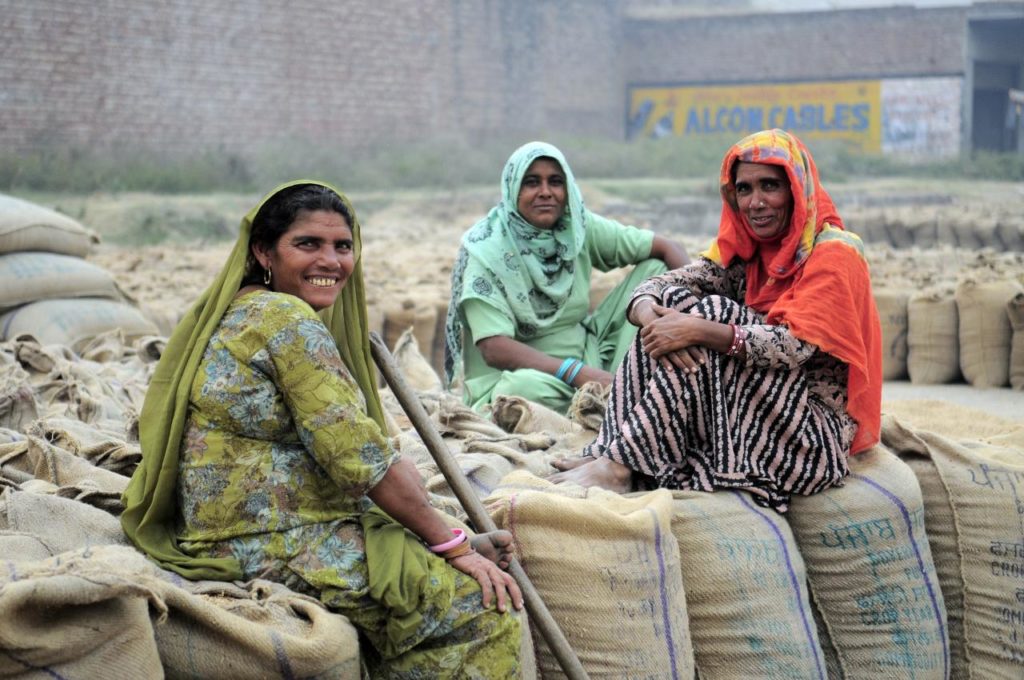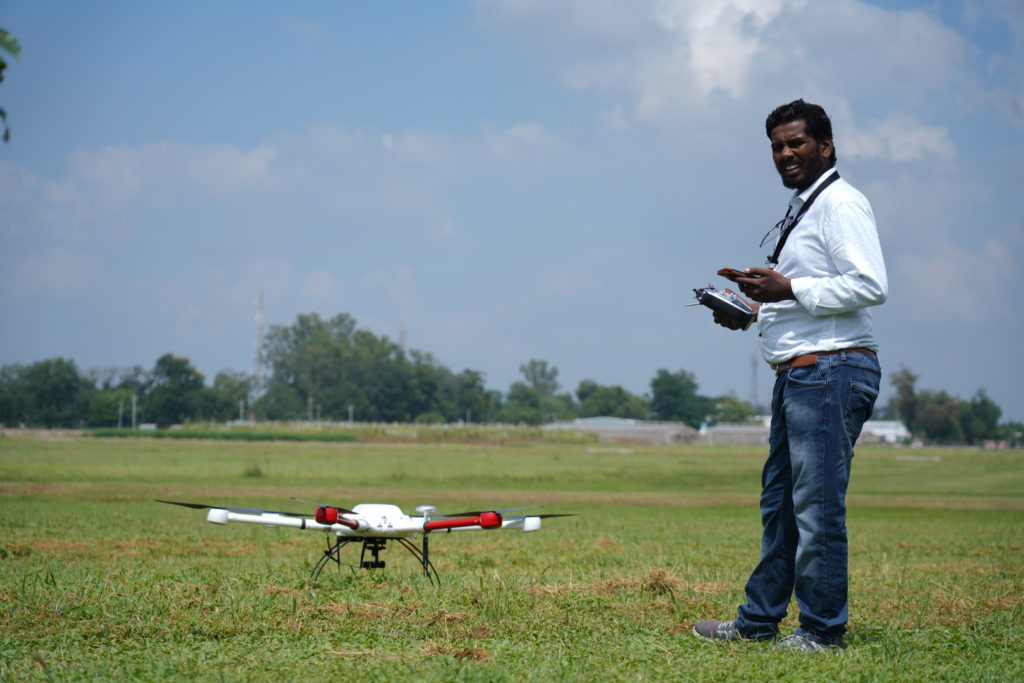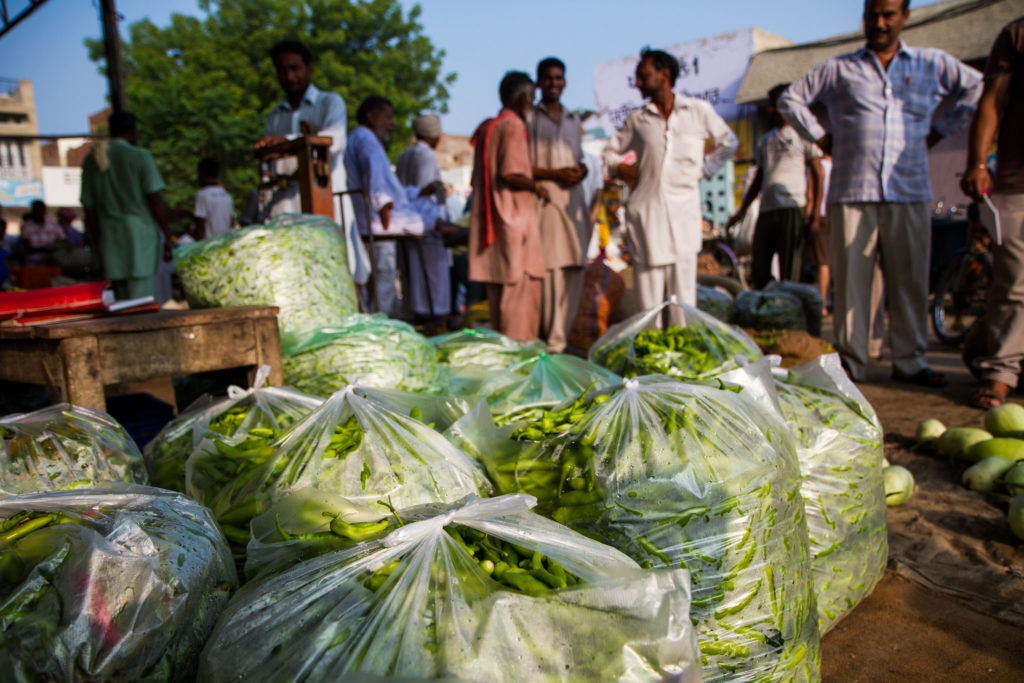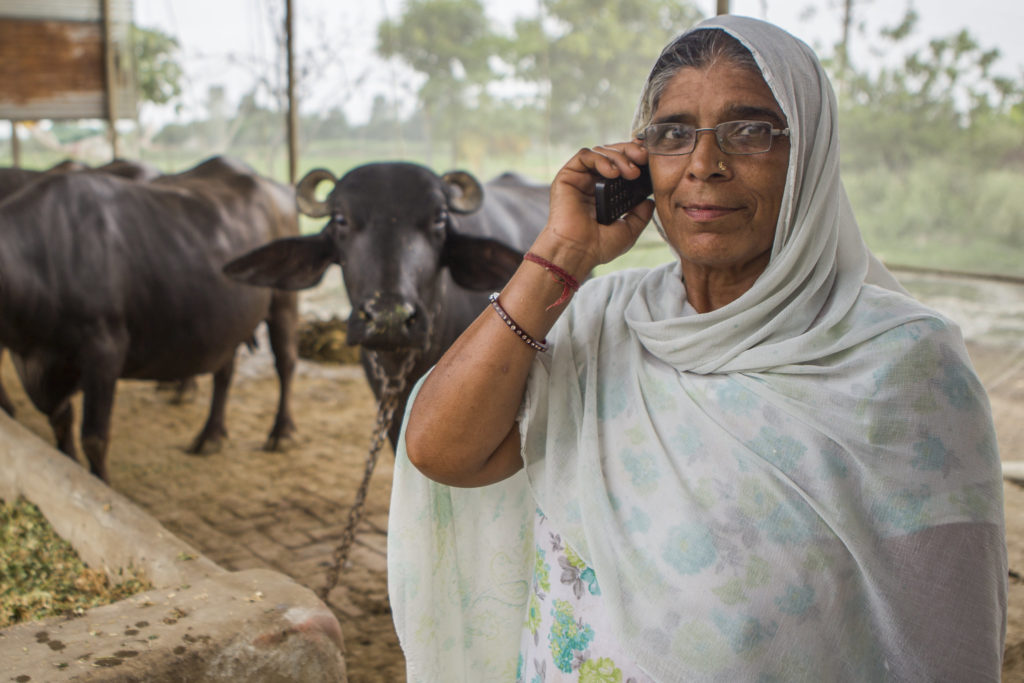Leveraging digital tools for adaptive food systems in India during the COVID-19 lockdown
A look at how digital tools and technologies have been and could be used to overcome coronavirus-related challenges to agricultural supply chains.
Furthermore, agriculture is a key engine that, alongside health and education, has the power to propel India and other developing countries toward reaching a number of the lofty Sustainable Development Goals (SDGs) by 2030. The question then is, how can India and the governments, in particular, intervene in agricultural value chains to help cope with the shocks caused by the coronavirus pandemic?
Agricultural extension via mobile phones
The agricultural sector relies on a cadre of people who play key roles in technology transfer. These specialists are often referred to as field extension workers or agriculture extension officers, and, in most Indian states, they are employed by the Department of Agriculture.
Extension workers are typically assigned to a cluster of villages and responsible for undertaking workshops, training programs, or field demonstrations on good agriculture practices and technologies. Recently, a number of development agencies have also been appointing extension officers to cover areas that, until now, have not been reached by the government extension system.
Stringent physical distancing measures could adversely impact the functioning agriculture extension systems; extension workers might find it challenging to move across villages and gather farmers for trainings or other capacity building activities. However, in the immediate future, agricultural extension work can be done via mobile phones. Recent data on mobile phone penetration and network coverage is encouraging. While e-Extension has been happening in India for some time, the efforts have been exploratory in nature and never positioned as the sole method for transferring information and conducting trainings.
In the current situation, phones and mobile networks might be the only means through which farmers can access meaningful advisory.
New models for contracting labor, accessing machinery, and soliciting services

Photo: © 2011 CIAT / Neil Palmer. Women at a rice packing center, in Sangrur, SE Punjab, India.
Food supply chains from farm to fork are complex webs that involve producers, consumers, agriculture and fishery inputs, processors, transporters, and more. In a country like India, where over 80% of farmers are smallholders (owning less than two acres of land), both the input supply chains that cater to farmers’ input needs (seed, fertilizer, agro-chemicals) and the output supply chains that link farmers’ produce to consumer demands are highly intermediated.
Because food supply chains have traditionally been constrained for capital, there has been little automation or mechanization at various nodes along food value chains. Consequently, most activities are manual and labor intensive, and, therefore, dependent on local labor markets.
“While the system of food distribution and retailing in rich nations is organized and automated, systems in developing countries are ‘labor intensive,’ making these supply chains much more vulnerable to COVID-19 and social distancing regulations,” said Johan Swinnen, Director General of the International Food Policy Research Institute (IFPRI) in the New York Times article “’Instead of Coronavirus, the Hunger Will Kill Us.’ A Global Food Crisis Looms.”
With the breakdown of informal labor markets, it is not uncommon to hear of instances where farmers are unable to harvest their produce due to labor shortages. Both large-scale returns of migrant agricultural workers to their native villages and the restrictions placed on local workers are reasons for labor disruptions.

Photo: ThoughFolks Media.
Over the past few years, Uber-style models of providing machinery as a service have emerged in a few pockets of the country. These startups were using digital platforms to aggregate demand and mobilize machinery in order to cost-effectively cater to the needs of farmers. There are also some encouraging machine-service model cases using drones to perform tasks like pesticide spraying.
These models have not yet out-performed the economic logic and convenience of local labor from the perspective of the smallholder farmer, but, as informal labor markets shrink, farmers might be more inclined to explore the Uber-style model of mechanization.
Further, governments and the development sector could explore the use of digital platforms to enable labor market functioning. For example, a digital platform could connect farmers and labor, minimizing the physical contact and crowding and, therefore, reducing the spread of the virus in informal labor markets.
An unintended positive outcome of digitizing aspects of the agricultural sector could be the formalization of informal economies, thereby providing governments with better data and the means to roll out targeted social interventions to protect farm labor.
Using digital platforms to decentralize markets and reduce contact
Labor issues are not only impacting the production side of agriculture but logistics and marketing activities as well. Nowhere is this more evident than at the critical nodes in the food supply chains like the spot markets or mandis.
Because Indian spot markets typically convene large crowds, especially during harvest times, governments are designing ad hoc measures to curb large gathering of farmers, traders, and shoppers. For instance, mandis in Punjab and Haryana are issuing tokens that indicate a specific time for the farmers to bring produce to market. There is also a cap on the quantity of produce they can sell. Farmers, however, are struggling to find workers to help load, transport, and unload produce at the mandi, therefore disrupting the efficiency of the spot markets.
When aggregated and considered in the longer term, these seemingly minor challenges could become serious threats to food security.
Dr. Ramesh Chand, a prominent Indian agricultural economist and a policy maker, advised the government to relax the Agricultural Produce Market Committee (APMC) Act, which could legalize the sale of agri-produce at the farm gate. The stated objective of this recommendation was to minimize food supply chain disruptions in light of the subdued spot market functioning and reduce crowding at mandis.
If the APMC Act was altered in the wake of the coronavirus pandemic, digital platforms could be an effective means to facilitate decentralized marketing and sale of agri-produce from the farm gate. For example, digital platforms could be designed to facilitate contract-farming arrangements and remotely monitor and control for quality. Activities like aggregation, packaging, transportation, and delivery could be scheduled in a way that minimizes contact in order to protect workers. These digital platforms could open digital sale opportunities for farmers who typically depend on spot markets to sell.

Photo: F. Fiondella / CCAFS. Market in Palumpur, India.
The shift to digital quality assessment, grading, assaying, and trust in procurement present bigger challenges. Quality assaying and grading of agri-produce is largely subjective, and although governments have been investing in assaying labs at mandis to gradually reduce human subjectivity, most traders prefer to physically inspect their produce. If markets were decentralized to the farm gate, there would also need to be a mechanism in place to remotely grade commodities and reduce the need for physical inspection. There is some promising imagine recognition technology that is viable for a few commodities, and work is ongoing to address challenges in a several other commodities where grades are dependent on the chemical composition of the product. Until a solution is found, blended digital platform models facilitate these activities at the farm gate.
Another emerging model of interest is farmers striking direct transactions with urban communities. A number of urban AgTech startups have leveraged this model, enabling farmers growing fresh produce within urban halos to find demand in city centers. In one instance, a group of 100 farmers in Siddipet, Telangana used WhatsApp, a digital messaging platform, to reach potential consumers in Hyderabad. The group of farmers was anchored by a key member who disseminated the message widely, compiled the orders, and ensured their deliveries. An in-depth look into how such a loose alliance of farmers leveraged simple tools to address supply and demand issues would be worthwhile. This could be an opportunity to templatize such initiatives through simple standard operating procedures so that other struggling farmers could be empowered by the same mechanisms.
Further, the crisis also gives government an opportunity to deploy warehouse-based sales through eNAM, a pan-India electronic trading portal. The concept of rural godowns, large warehouses within APMC premises, have been part of many government policies and plans of the National Bank for Agriculture and Rural Development. However, rural godowns have yet to gain momentum.
Due to the limited number of buyers and traders in the spot markets, farmers have to undertake distress sale to minimize their losses during the pandemic, but, if they had access to warehouses and godowns, they could store excess product and document the storage of their assets with electronic negotiable warehouse receipts. This receipt could be pledged by the farmer for immediate liquidity without the need to undertake a distress sale, and the produce sold once market demand returns. Digitally-enabled godowns would also have enhanced governments’ ability to procure goods at Minimum Support Price (MSP) and allowed for the transfer of funds directly into farmers’ bank accounts.
Digitizing input supply chains

Photo: Prashanth Vishwanathan / CCAFS. Kamla Devi listens to messages of weather and best climate friendly crop practices on her mobile phone while working in the cowshed at her home in Anjanthalli.
The input supply chains which provide farmers access to seeds, fertilizers, chemicals, etc. could also see a mini digital revolution due to the consequences of COVID-19. Similar to the farm-to-fork supply chains, input supply chains are highly intermediated. There is a strong informal seed sector through which farmers access seeds. Though the sub-sectors of the agri-input value chains were exempt from lockdown measures, restrictions on labor and transportation could pose challenges. e-Commerce platforms that offer farm inputs could potentially reduce the impact of these disruptions, and the data made available by digitsing the market would be an added benefit.
Additionally, a whole host of other services and e-Extension could be provided to farmers utilizing e-Commerce platforms. These platforms could also be integrated with financial institutions to enable institutional credit access for smallholder farmers.
***
To conclude, digital tools and technologies pose viable methods for addressing some of the disruptions currently experienced by the agricultural sector. A number of the recommendations are largely applicable to other developing regions where agriculture is also characterized by a large number of smallholder farmers.
Although agriculture cannot do away with grassroots institutions and human interventions, digital technologies can play an important role in helping the sector overcome specific challenges posed by the pandemic.
And, faced with the possibility of extended lockdown measures, there couldn’t be a more opportune time for stakeholders to explore digital agricultural solutions.
Feature photo credit: F. Fiondella / CCAFS.
April 30, 2020
Ram Dhulipala
Theme Leader - Digital Agriculture & Youth
ICRISAT
Hyderabad, India
10 - 10Shares
Latest news
10 - 10Shares







Hi, your information is very inspired by me, and your information is very impressive and so much helpful for me. Keep it up and Thank you very much.:)